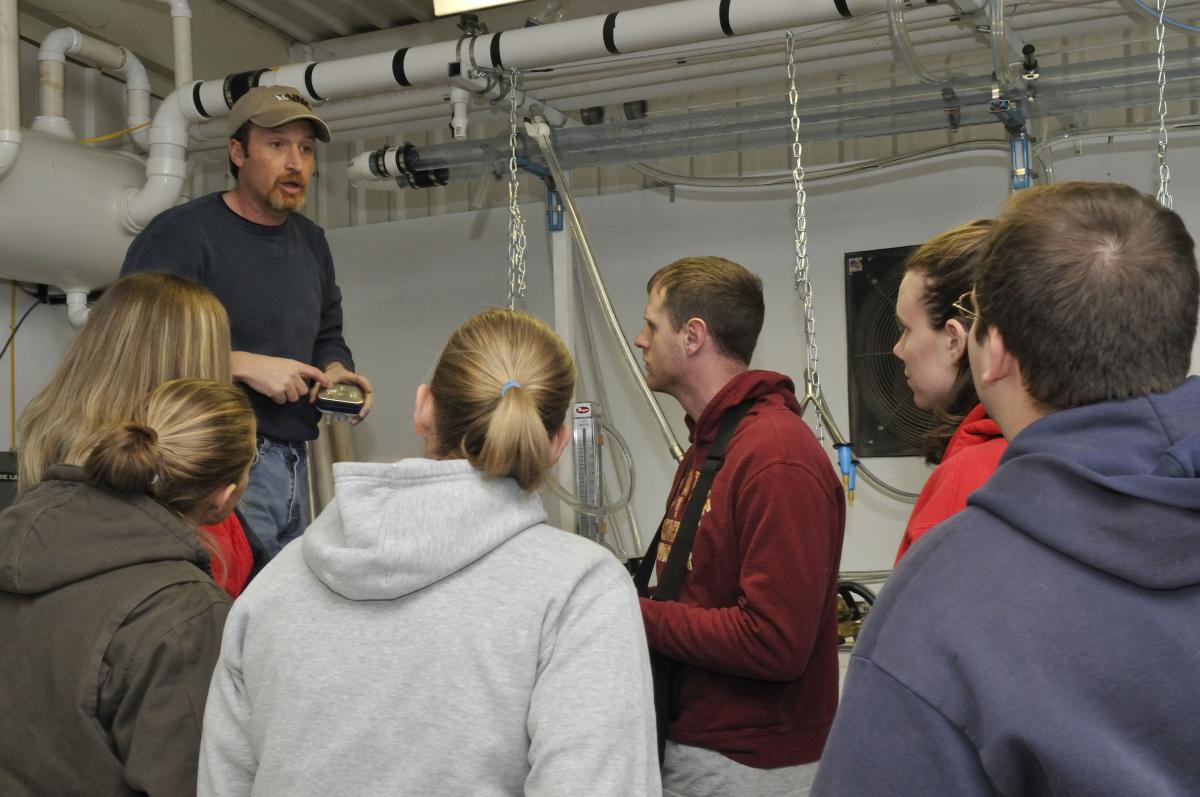AMES, Iowa – As a senior clinician at Iowa State University’s College of Veterinary Medicine, Dr. Pat Gorden teaches veterinary students what is abnormal and normal when it comes to cow health and production. That’s easy enough to demonstrate when he brings the students to the dairy barn to observe the cows. But when he developed a course on milking systems analysis, he knew that his students would need a systematic visual observation of the milking system to learn what is normal and abnormal and how system operation can affect the production of quality milk. That’s when his knack for physics led him to develop a milking system uniquely suited for teaching and learning.
In August 2009 Dr. Gorden began building the milking simulator in one of the unused rooms on the Veterinary Medicine campus. Using equipment donated by Dr. David Reid of Bou-Matic and buying other equipment with the fees he earned from client services, Dr. Gorden built a freestanding milking system with its own vacuum pump and lines, and four milking stalls. He used as much glass and clear PVC as possible when building the system so students could visualize how fluid (water) runs through it. The unique design allows students to watch the flow of the water and trace it back. It also allows students to see the effects of different configurations and how they affect fluid flow. At most dairies, says Dr. Gorden, the equipment is in the basement or behind panels so a veterinarian in the milking parlor can’t see what’s happening or not happening with the system equipment.
“We don’t expect the students to learn how to fix a milking system,” Dr. Gorden said. “We want them to understand how the system works so they can incorporate that knowledge into their herd analysis. Knowing the basics of milking system analysis allows a veterinarian to be able to rule out a system malfunction when diagnosing a milk quality problem.” Veterinarians, says Dr. Gorden, typically go into the milking parlor to wash their boots so they are in the right spot to see what’s going on with the system. “Veterinarians are also very familiar with the herd management of the dairy farm, and can offer an impartial and independent assessment.”
Having hosted a pre-conference seminar on milking system analysis during the 2009 annual conference of the American Association of Bovine Practitioners, Dr. Gorden sees lots of opportunities for other continuing education classes. Most important, says Dr. Gorden, is the system will allow us to improve student teaching and provide students with another service to offer their clients when they enter practice.

About the photo: Having a demonstration unit like at the college allows us to examine the effects of air flow restriction on pulsator function and on vacuum stability. In this photo, the students have just completed evaluating pulsators in which they determined the problem of five malfunctioning pulsator scenarios.
